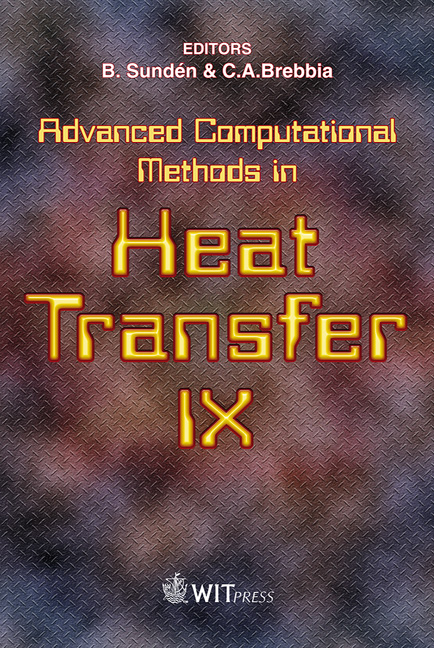Spray Water Cooling Heat Transfer Under Oxide Scale Formation Conditions
Price
Free (open access)
Transaction
Volume
53
Pages
10
Published
2006
Size
664 kb
Paper DOI
10.2495/HT060161
Copyright
WIT Press
Author(s)
R. Viscorova, R. Scholz, K.-H. Spitzer and J. Wendelstorf
Abstract
Spray water cooling is an important technology used for the cooling of materials from temperatures up to 1800K. The heat transfer coefficient (HTC) in the so-called steady film boiling regime is known to be a function of the water mass flow density. Below a specific surface temperature TL, film boiling becomes unstable and the HTC shows a strong dependence on temperature (Leidenfrost effect). The HTC was measured by an automated cooling test stand (instationary method). Compared to the previous state-of-the-art, an additional temperature dependency in the high temperature regime was found. A new analytic fit formula for the dependence of the heat transfer coefficient on temperature and water impact density is proposed and discussed. Spray water cooling of steel materials at temperature levels above 1000K introduces additional effects due to the formation of oxide layers (scale). These effects and experiments under scale formation conditions will be presented and discussed. Keywords: scale formation, spray water cooling, continuous casting, hot rolling, heat transfer coefficient. 1 Introduction Spray water is used for cooling in steel materials production processes, e.g. as part of the casting and rolling procedure. Due to the high temperatures the steel surface is oxidized. A lack of knowledge about the influence of this oxide layer (scale) on heat transfer conditions may prevent a quantitative prediction of the cooling procedure. For predictable homogenous cooling, the dependence of the heat transfer coefficient (HTC) on its principal parameters, the surface temperature
Keywords
scale formation, spray water cooling, continuous casting, hot rolling, heat transfer coefficient.





